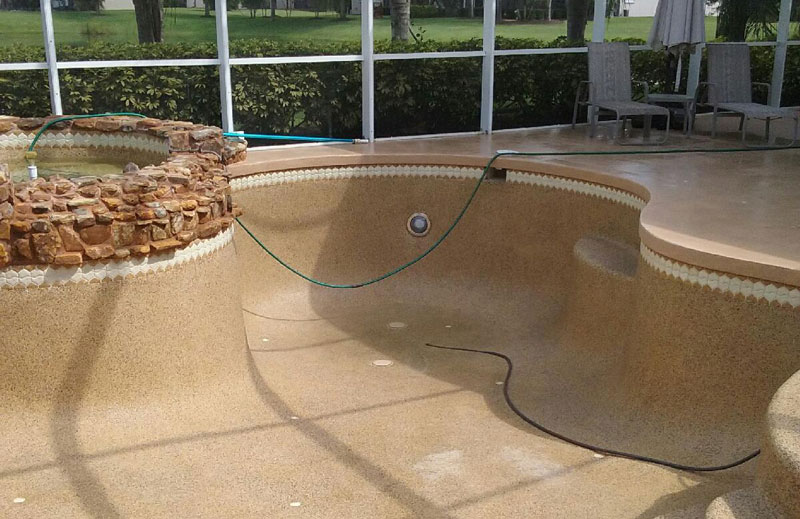New to pools? Maintaining a safe, comfortable and algae-free pool can seem like a big job, especially in Florida, where rain and sunshine both threaten to throw your pool’s chemical balance off-kilter. That’s what we’re here for. Using experienced professionals who know the science by heart, Bahama Blue regular pool maintenance takes the tricky laboratory stuff off your plate, so you can rest assured your pool is staying so fresh and so clean.
Here’s how we make chemicals work for you.
The key to a pool’s chemical makeup is making sure the water is disinfected without being irritating or harmful to humans, and creating an environment in which that balance will maintain itself for as long as possible.
Chlorine dissolves in water to create hypochlorous acid, which is what actually disinfects the water by killing the bacteria and algae in your pool. A relatively weak acid, hypochlorous acid also oxidizes inorganic contaminants.
When we add chlorine to a pool, some of the chemical is burned off immediately as it kills existing microorganisms; the rest stays in the water as the “free chlorine residual,” the hypochlorous acid that fights against new contaminants as they enter the water.
We want to use enough chlorine so that your pool is in hospitable for microorganisms but still comfortable for people. We find that balance by measuring and adjusting the water’s pH.
pH is measured on a scale of 0 to 14, where 0 is very acidic and 14 is very basic, while 7 is neutral. We want your pool just barely on the base side of neutral, between 7.2 and 7.6. Any higher, and the chlorine won’t be able to disinfect the water; any lower, and the acidity of the water will irritate your eyes and skin.
If the water pH tests too high, we use muriatic acid to lower the pH, thereby allowing the chlorine to do its job.
If the pH is too low, we use sodium bicarbonate to increase the pH and also the water’s alkalinity, neutralizing acids and making the pool water more resistant to changes in pH. With the right alkalinity, not only is your pool able to kill microorganisms, but it’s also able to maintain its proper pH level.
Finally, we use cyanuric acid as a stabilizer. Throughout the day, the sun’s rays destroy the free chlorine residual in your pool, making it ripe for microorganism growth. The stabilizer reduces this free chlorine decomposition, once again helping to maintain that delicate balance so you can enjoy a refreshing swim.


